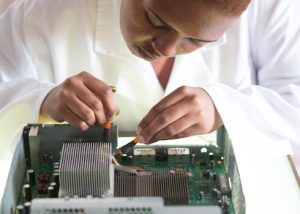Closing the Digital Divide: EdTech for Underserved Communities
In a world where technology is constantly advancing and shaping our daily lives, there is an undeniable digital divide that exists between those who have access to and are proficient in technology and those who do not. This gap is particularly evident in underserved communities, where limited resources and access to technology hinder individuals and communities from keeping up with the ever-evolving digital landscape. However, with the rise of educational technology (EdTech), there is hope for closing this gap and empowering underserved communities to take advantage of the opportunities provided by technology. This article will delve into the state of the digital divide in underserved communities and how EdTech can play a crucial role in bridging this gap.
The Digital Divide in Underserved Communities
The digital divide refers to the gap between those who have access to technology and those who do not. While this gap exists globally, it is significantly wider in underserved communities. According to a report by the Pew Research Center, 34% of Americans living in rural areas do not have access to broadband internet, compared to only 4% in urban areas. This lack of access to reliable and high-speed internet in underserved areas severely hinders individuals from fully participating in the digital world.
Moreover, even when there is access to technology, many underserved communities lack the resources and skills needed to utilize it effectively. This creates a knowledge gap between those who are tech-savvy and those who are not, hindering individuals from underserved communities from obtaining essential skills for the digital age.
The Power of EdTech in Closing the Gap
Educational technology, or EdTech, refers to the use of digital tools and resources for teaching and learning. In recent years, EdTech has gained significant traction in the education sector, and its potential for addressing the digital divide in underserved communities cannot be ignored.
Improving Access to Technology
EdTech has the power to improve access to technology in underserved communities. By providing schools and community organizations in these areas with technology resources such as laptops, tablets, and internet connectivity, students and individuals can gain access to the digital world. According to a study by D2L, the use of technology in the classroom has shown to improve learning outcomes and increase engagement, particularly among students from underserved communities.
Promoting Digital Literacy
EdTech not only provides access to technology but also promotes digital literacy in underserved communities. Through interactive learning tools and digital resources, individuals can gain essential digital skills such as coding, graphic design, and data analysis, that are highly sought after in the job market. This, in turn, can empower individuals and communities to take advantage of the opportunities provided by technology and break the cycle of poverty.
Making Education More Accessible
In many underserved communities, access to quality education is limited due to factors such as physical distance, lack of resources, and qualified teachers. EdTech can bridge this gap by providing online learning opportunities. With the help of online learning platforms, individuals can take courses and access educational resources from anywhere, regardless of their geographical location or financial situation. This not only provides access to education but also promotes lifelong learning.
Challenges and Solutions
While EdTech has the potential to bridge the digital divide, there are still challenges that need to be addressed. One of the main challenges is the lack of access to reliable internet connectivity in many underserved communities. This can be solved by investing in infrastructure and providing subsidies for low-income families. Additionally, there is a need for proper training and support for individuals and educators to effectively utilize EdTech resources.
Moreover, it is crucial to ensure that EdTech tools and resources are designed with inclusivity in mind. This means taking into consideration the needs and learning styles of individuals from different backgrounds and ensuring that these tools are accessible to everyone.
The Impact of EdTech in Underserved Communities
The use of EdTech in underserved communities has the potential to not only bridge the digital divide but also bring about positive social and economic change. By providing access to technology and promoting digital literacy, individuals and communities can gain the skills and knowledge needed to thrive in today’s digital world. This, in turn, can lead to increased employability, higher wages, and a better quality of life.
Closing the digital divide is crucial for creating a more equitable society and giving everyone an equal opportunity to succeed. EdTech has the potential to make this a reality by providing access to technology, promoting digital literacy, and making education more accessible. It is up to us to harness the power of EdTech and work towards closing the digital divide in underserved communities.
Conclusion
The digital divide in underserved communities is a pressing issue that needs to be addressed. However, with the help of EdTech, we can bridge this gap and empower individuals and communities with the skills and resources needed to thrive in the digital age. By investing in infrastructure, providing support and training, and ensuring inclusivity, we can make a significant impact in closing the digital divide for underserved communities.






